Former Saga owner’s luxury Shoreline Crescent scheme has been completed following a string of headlines about its lack of affordable housing. Tom Lowe tours the building and is impressed by what he finds

It can be a tough world out there for billionaire philanthropists. Former Saga owner turned property developer Roger De Haan has certainly not had it easy of late.
Last summer, De Haan invited a group of journalists down from London to visit his new luxury housing scheme in Folkestone. The idea seems to have been to show off the first phase of a 1,000-home mixed-use development which will stretch for nearly a kilometre along the town’s beach front.
It is fair to say that not all went to plan. Instead of the reporters fawning over the 84-home building, then still under construction, De Haan was repaid with a series of pretty scalding editorials questioning the wisdom of building a high-end block of flats for rich people in a town desperately in need of affordable housing.
Interviews he gave to The Sun, The Guardian, the Financial Times and local paper Kent Online found De Haan on the defensive as he was forced to deny the development - which has 8% affordable housing - was gentrifying Folkestone, driving up property prices for locals and turning the town into what The Independent described as “Shoreditch-on-Sea”.
It will have been particularly bruising for De Haan because he has been the financial backer behind a series of high-profile regeneration schemes in Folkestone over the past two decades which have contributed significantly to the town’s remarkable transformation. Once a typical decaying English seaside town, cast adrift by the closure of its ferry port in 2001, it has become a burgeoning tourist centre and trendy destination of choice for weekending Londoners.
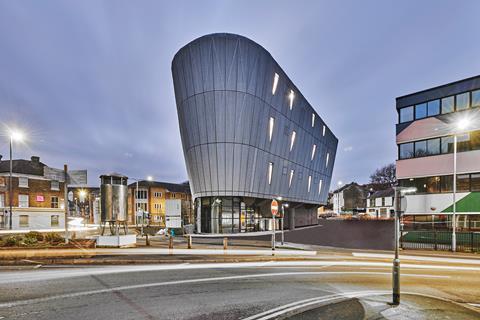
De Haan’s recent investments have included the world’s first multi-storey skate park, F51, which was named RIBA’s best building in the South-east last year. Designed by Hollaway Studio, it was originally intended to be a multi-storey carpark before De Haan changed the brief out of a desire to invest in the town’s young people.
With entrance fees for local kids at just £1 a month, the cost of the building is a gift to Folkestone from De Haan’s charitable trust, which has invested more than £100m in the town so far.
>> Also read: California dreamin as De Haan brings a skatepark to Folkestone
Other recent projects include the transformation of the town’s formerly derelict harbour arm into one of the region’s premier visitor attractions. A viaduct crossing the harbour and a Victorian train station, which closed in 2014, was opened three years later by De Haan’s Folkestone Harbour Company as an attractive greenery-festooned promenade leading to a seafront complex of bars and restaurants.
De Haan certainly did not have to do all of this when he sold his family business for £1.35bn in 2004. At the time, Folkestone was “fast turning into a slum”, he said in an interview with Building back in 2007.
Instead of retiring, however, De Haan, then 56, set about attempting to turn around the fortunes of the town in which Saga had been based since 1951. Ten years after selling the business, he was knighted for services to education and to charity in Kent and overseas.
Despite this, he is known to shun the limelight and is notoriously tricky to pin down for an interview, a trait which will hardly have been helped by last summer’s press reaction to Shoreline Crescent. It might go some way to explaining why De Haan is not present on a second press trip to the site, attended by Building last month to mark the completion of the building.
His absence is an awkward elephant in the room for the day’s tour guides, representatives from the scheme’s project team. At times it almost feels more like a PR clean-up operation than a grand unveiling.
This is unfortunate, because the building is undoubtedly impressive. Putting aside all of the controversy about its affordability – the cheapest property has been priced at £430,000 and the largest penthouses are expected to top £3m – it is, visually at least, a very attractive building. Curving grandly along the shore like an inverted version of the Royal Crescent in Bath, it makes no attempt to hide its high-end status.
With its cladding of glittering white bricks imported from Spain and a gently undulating facade which makes it look like Morecambe’s Art Deco Midland Hotel viewed through a wobbly fairground mirror, it has a certain 1930s glamour about it and a playful charm appropriate to its setting.
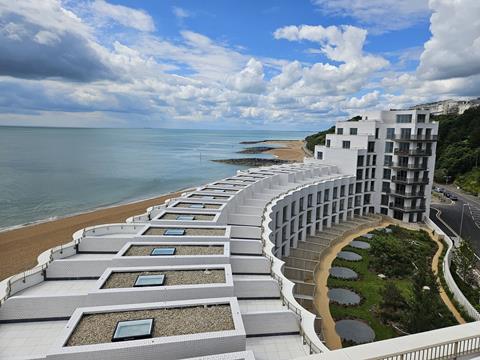
Designed by Acme and built by local contractor Jenner, it is intended as a launchpad of sorts for the wider masterplan. Completed earlier this year, flats are already on sale, and the success of the scheme will be used to measure the viability of completing the rest of the beach front development.
It already represents a significant sunk cost for Haan, who spared no expense in ensuring that the building exuded an impression of quality on a beach front where many of the buildings are in an obvious state of decay.
A case in point is the neighbouring Marine Crescent, a grade II-listed terrace built in the 1870s that is now covered in scaffolding as it undergoes repairs. Formerly grand, its cream-coloured stucco has become covered in stains and its cast-iron railings heavily rusted, the effect of Folkestone’s notoriously stormy weather and the strong, salty winds which batter its beachfront buildings.
“That was his biggest fear,” Jenner managing director Martin Sandall says of De Haan, nodding towards Marine Crescent. “He told us, ‘that is what I don’t want’.”
It affected the design of the building down to the choice of stainless steel screws and the glazed cladding tiles, chosen because of their resistance to the salty sea air. All services have been safely sealed in behind the facade to prevent exposure, and the windows are triple-glazed so the flats are silent inside even in the strongest gale.
“It’s a very, very robustly designed building,” Sandall says, and the wealthy potential buyers currently eyeing its properties would presumably expect nothing less.
The site also posed significant challenges. The weather, which Sandall says often took the form of “sideways rain”, meant that construction took longer than expected. “One lesson learnt is that you have to have a different percentage of days craned off,” he admits.
The beach location required the excavation of a huge hole some 30m deep to build up the foundations and make space for the underground car park. Unpredictable ground conditions complicated the dig, which encountered either loose gravel or huge boulders that needed to be broken up or craned out.
The team went through four piling rigs, at one point including the largest in Europe, which was only available because of a slowdown in construction work during the pandemic. Second World War ordnance was also an issue due to Folkestone’s position on the south coast, although in the end only one unexploded bomb was discovered. It was, however, found to be still live and had to be defused by a specialist team.
We love curves, but maybe let’s not do as many for the next scheme
The choice of cladding also proved time-consuming, with each of the building’s two million bricks having to be individually crafted and placed to form the building’s curving facade. Far from provoking the ire of Jenner’s builders, Sandall says this proved to be a labour of love.
“They took pride in their work,” he says. “We enjoyed the handcrafted nature of it.” Although he admits it may have overcomplicated things: “We love curves, but maybe let’s not do as many for the next scheme.”
Inside, the show homes which have been fitted out for potential buyers to look around have all been tastefully furnished with soft seaside pastels and mid-century modern furniture. Building was shown around a town house, an apartment and two sprawling penthouses, all of which have expensive-looking views across the Channel, and, on a clear day, all the way to France.
How the tour is expected to counter criticisms of the scheme being designed for the rich is not clear, but no one present seems to mind too much when it looks this luxurious.
The quality of the building is the result of De Haan’s “emotional” connection to Folkestone, Sandall says. “If it had been a commercial developer, it would not have looked like this.”
It is fair to say there were no obvious signs of value engineering. “He’s not just funding it,” Sandall adds. “He’s genuinely enthusiastic. It’s a really personal thing for him.”
This is not a feeling which seems to be shared by locals. One Folkestonite, when asked what she thought of the newly completed building, replied simply that it “shouldn’t be there.” This is outside Marine Crescent, standing on a pavement which used to have a sea view, albeit via an amusement park which had lain derelict for several years.
I know interest rates have gone up, but this doesn’t help. It’s just going to be housing for a load of Londoners
Now that site has been cleared and replaced with an extension of the pebble beach – which has been raised as part of the masterplan to prevent flooding – blocking the pavement’s sea view in the process. It is hardly a drastic downgrade from the previous view, but locals are not predisposed to give De Haan much leeway. “For all he’s done for the town, for some reason locals still want to stick the knife in,” says Ella Brocklebank, Jenner’s head of communications and business development.
Two residents of Marine Crescent standing on the stone steps outside their front door have seen their rent go up from £650 a month to £975 in the past two years, which they blame partly on Folkestone’s De Haan-led revival. “I know interest rates have gone up, but this doesn’t help. It’s just going to be housing for a load of Londoners.”
Another couple walking down the town’s Old High Street, a picturesque and steeply sloping cobbled road which is lined with boutiques and coffee shops which look like they have been parachuted in from Peckham, are similarly wary of De Haan’s contributions: “I’m sure he’s done a lot for Folkestone, but he’s made a lot of money from Folkestone too.
“I don’t understand what right he has to build on the beach. It should be public land. It was always a bit of a wilderness down there, and now it’s just wasteland.”
Part of the issue is that what was once a much-loved amusement park on the beach is now a vast expanse of empty land which locals do not feel any attachment to or control over. The beach has been tidied up and extended, but in terms of timings for completing the scheme’s other sites, 75-year-old De Haan has merely said he wants it built within his lifetime.
In the meantime, a string of large fenced-off areas mark out where the new buildings would be located without any kind of meanwhile use.
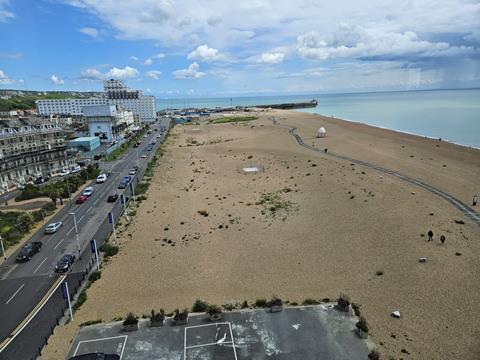
Another factor explaining the lack of love for De Haan could simply be his wealth. All the locals to whom Building spoke mentioned their fear of rich Londoners coming to the town, driving up prices and changing its character. There is a feeling of regeneration being done to them, rather than for them, and by someone they seem to respect and resent at the same time.
One taxi driver is more positive, however: “[De Haan] is fantastic. The council would have done nothing for Folkestone.”
Asked what he thinks of the changes which have come to Folkestone with its increase of tourism, he replies: “Well, at least it’s better than Dover.”
The two towns had operated rival ferry services before the latter won out in the battle to hold on to the remains of the cross-Channel market as flights got progressively cheaper in the 1990s. What replaced Folkestone’s ferries? “Nothing.”
Initial consultation meetings for the shorefront masterplan had been “difficult”, admit architects from Acme who have joined the tour. Planning processes are full of stories about regeneration schemes in places which have diminished, leaving a core of quite grand and historic, if deteriorating, buildings in a shrinking town with relatively low property prices. Then a developer comes in and everything starts to change.
Another way of looking at it is that Folkestone had existed long before its rapid growth as a Victorian tourist spot. What did the locals back then think about all the neo-classical villas being built and which now characterise the town which is so cherished by locals?
The truth is, sometimes towns change. And, with Shoreline Crescent, De Haan has at least started his shorefront redevelopment with a building that future generations could be proud of.




















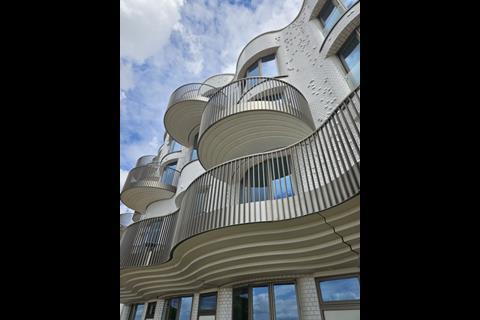
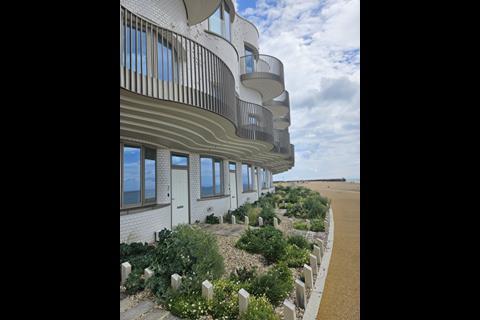
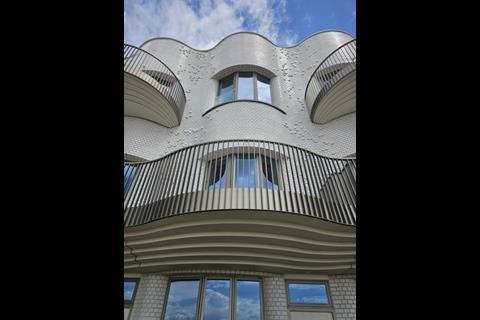
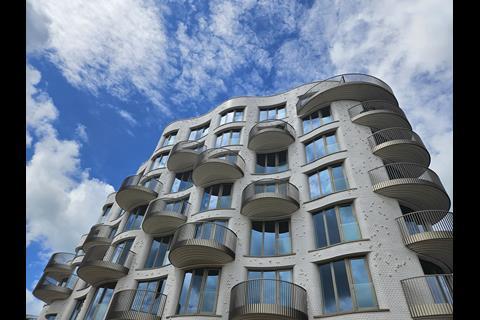
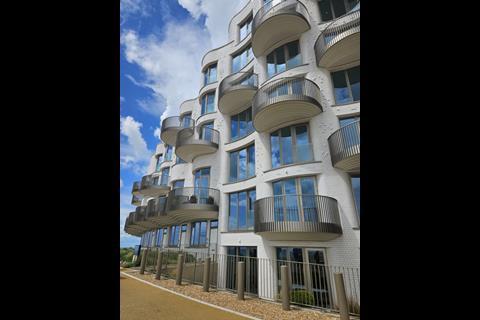

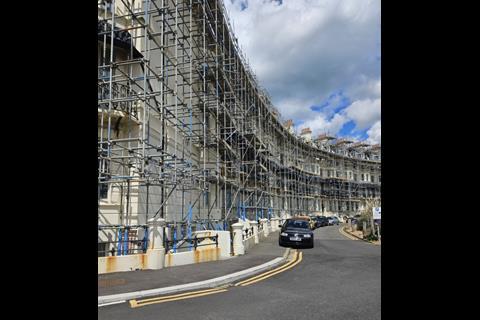
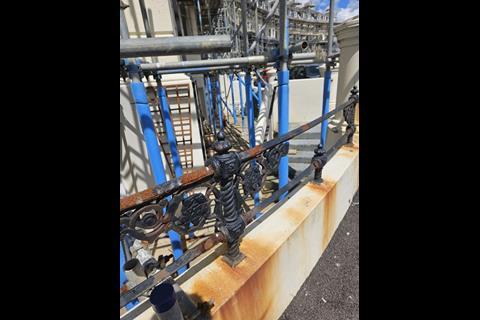
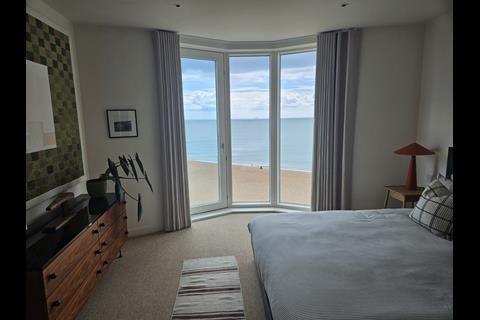

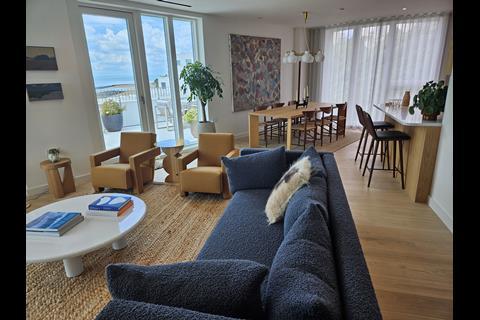





No comments yet